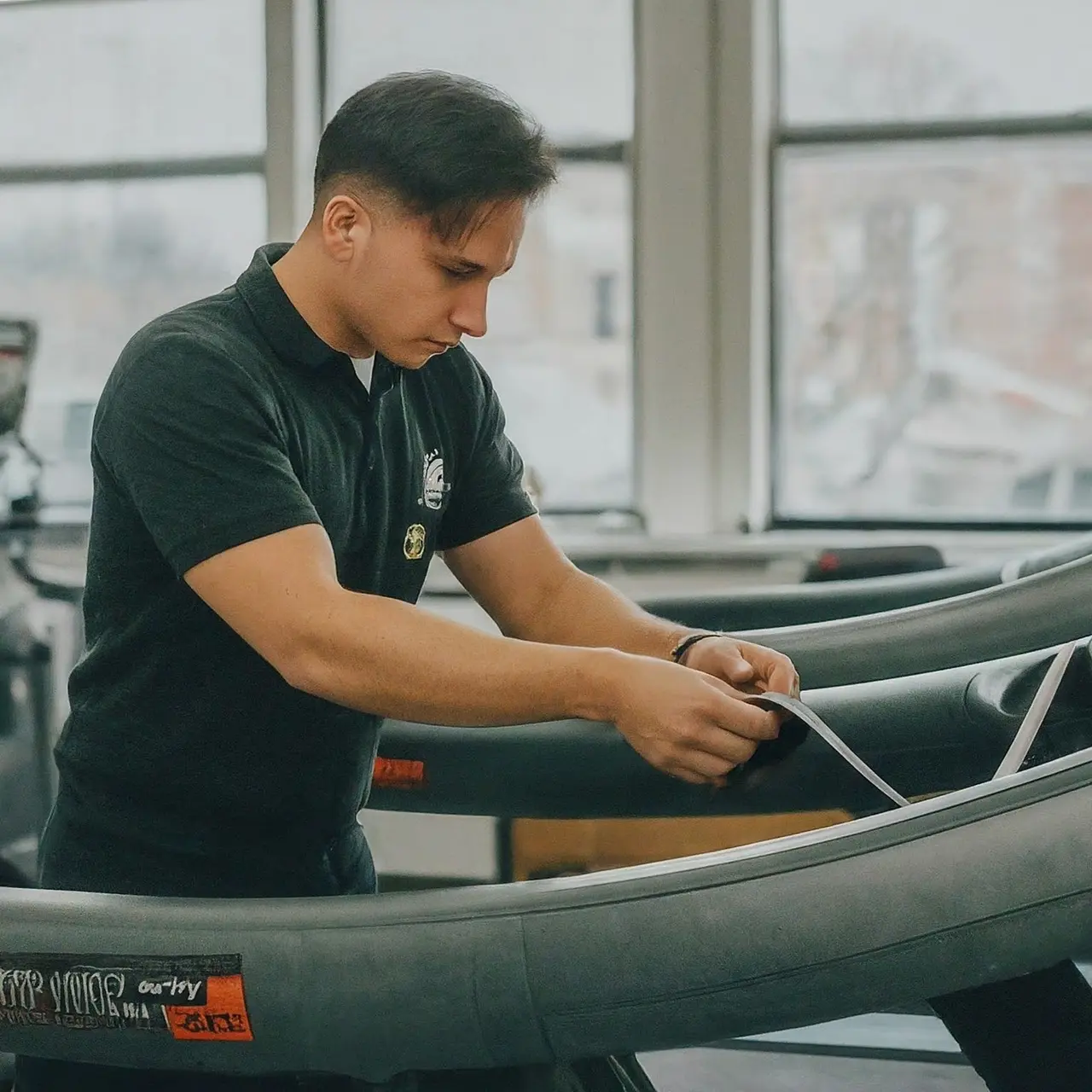When managing a gym, the satisfaction and safety of your members should be at the forefront of your priorities. One aspect that often goes overlooked, however, is the condition of your treadmills’ running belts. Ensuring these are regularly checked is key to providing a top-notch workout experience. Let’s delve into why this is crucial and how it benefits your gym.
The Importance of Treadmill Maintenance
Every gym owner knows that the key to a successful fitness center is not just getting new equipment, but also keeping that equipment in top shape. Regular maintenance, especially of treadmills, which are some of the most frequently used machines, plays a pivotal role in this. A well-maintained treadmill ensures safety, reliability, and a great user experience. But among all the components, the running belt stands out as particularly crucial for attention.
To understand why let’s get into the nitty-gritty of what a running belt does. Essentially, it’s the part of the treadmill that moves under the runner’s feet. If it becomes worn out or uneven, it can cause slips or falls, not to mention an uncomfortable running experience. This can result in injuries that put your gym’s reputation at risk. Thus, keeping an eagle eye on the condition of these belts isn’t just about equipment longevity but also about protecting your brand and ensuring member satisfaction.
Recognizing the Signs of Running Belt Wear and Tear
Being proactive about treadmill maintenance starts with knowing what to look for. Over time, running belts can stretch, fray, or lose their tension and alignment. One sign of a belt in need of attention is if it starts slipping or if you can feel or see any fraying edges. Another red flag is a belt that’s excessively tight or loose, which not only affects the machine’s operation but can also put strain on other components, increasing the risk of a breakdown.
Moreover, regular users might report changes in the belt’s grip or an uneven running surface. These changes often go unnoticed at first but can significantly impact the user’s running form and potentially lead to injuries over time. By keeping a close ear to your members’ feedback and conducting regular visual and hands-on checks, you can catch these issues before they turn into real problems.
The Risks of Neglecting Running Belt Checkups
Ignoring the maintenance needs of your treadmill’s running belts doesn’t just risk the occasional equipment breakdown; it exposes your gym to a wider array of hazards. First off, there’s the obvious risk to physical safety. A malfunctioning or deteriorating belt can lead to falls and injuries, which can harm your gym’s reputation and possibly result in costly lawsuits. But beyond the obvious, there’s also the detriment to your equipment’s lifespan and performance.
A poorly maintained belt puts undue stress on the treadmill’s motor and other mechanical components, leading to overheating, increased wear and tear, and ultimately, more frequent and costly repairs or replacements. This not only affects your bottom line but can also lead to dissatisfaction among members if their favorite treadmill is often ‘out of service.’ Thus, neglect can have wide-reaching implications, affecting everything from member retention to financial health.
How Regular Checkups Can Enhance Gym Member Experience
Turning regular treadmill maintenance into a routine is not just good practice; it’s a strategic move that enhances your member’s gym experience significantly. A running belt in good condition provides a smooth and safe surface that encourages longer, more enjoyable workouts. This not only helps with member retention but can also be a draw for new members looking for a high-quality fitness center.
Additionally, demonstrating that you care for and invest in maintaining your equipment can build trust and loyalty among your members. It sends a clear message that their safety and satisfaction are your top priorities. By communicating your maintenance efforts, you further enhance this trust, creating a sense of community and belonging among your gym goers.
Step-by-Step Guide to Checking Your Treadmills’ Running Belts
Initiating regular checkups on your gym’s treadmills requires a systematic approach. Starting with a visual inspection can help identify any obvious issues like fraying or misalignment. Next, testing the belt’s tension and alignment according to the manufacturer’s specifications is key. A special focus should be placed on ensuring that the belt is perfectly centered and has the right amount of give when pressed down in the center.
After the physical assessment, running the treadmill at a slow speed allows for observing any slippage or tracking issues. It’s also a good time to listen for any unusual sounds that might indicate internal problems. If any issues are detected during these checks, referring to the treadmill manufacturer’s guidelines or consulting a professional should be your next step. Regularly logging these inspections ensures you have a historical record of maintenance, which can be invaluable for troubleshooting future issues.
Professional Maintenance Vs. DIY: What’s Best for Your Gym?
Deciding between tackling treadmill maintenance in-house or hiring professionals boils down to a few key considerations, including cost, expertise, and time. While DIY can save money upfront, ensuring you have the necessary skills and time to carry out maintenance correctly is crucial. On the other hand, hiring professionals, although more costly, guarantees that your treadmills are serviced correctly and efficiently, potentially saving you money in the long run on repairs and replacements.
Ultimately, the best approach may involve a mix of both. Performing regular visual inspections and simple maintenance tasks in-house while leaving more complex issues to the professionals can strike the right balance between cost-effectiveness and ensuring your equipment is well-maintained. Regular training for your staff on basic treadmill maintenance can also go a long way in supporting this approach.
The Payoff of Regular Maintenance
Regular checkups of your gym’s treadmill running belts are not just about maintenance; they are about investing in your gym’s reputation and your members’ safety and satisfaction. By integrating these inspections into your routine, you’re ensuring that your treadmills always operate at their best, consequently keeping your members happy, safe, and coming back. It’s a small effort for a significant payoff.

